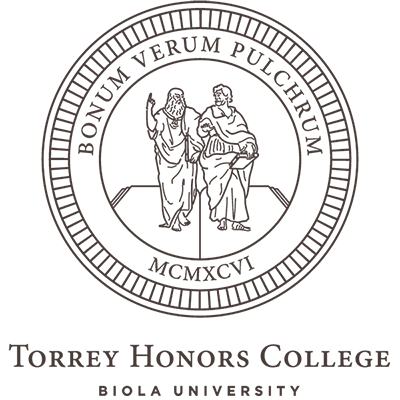A scene from the Leben der heiligen Altväter (1482)
Wesley’s Christian Library Vol 6
Vol 6 Contents
- Extracts from the Works of John Preston, D.D
- The New Covenant, Or the Saints Portion
- Extracts from the Works of Richard Sibs, D.D
- The Life of Dr. Richard Sibs
- The Fountain Opened; Or, The Mystery of Godliness Revealed
- The Nativity of Christ, Celebrated by Angels
- A Discovery of the Near Union and Communion Betwixt Christ and the Church
- Extracts from the Works of Thomas Goodwin, D.D
- The Life of Thomas Goodwin, D. D
- A Child of Light Walking in Darkness
- Christ Set Forth
- The Heart of Christ in Heaven, Towards Sinners on Earth— In Three Parts
Description and Discussion
John Preston was introduced in volume 5, where his excerpts began.

John Preston, The New Covenant, Or the Saints Portion: Read it here. Wesley provides 45 pages from Preston’s remarkable 600-page book whose full title is The new covenant, or, The saints portion: a treatise unfolding the all-sufficiencie of God, mans uprightness, and the covenant of grace, delivered in fourteene sermons upon Gen. 17:1,2; Whereunto are adioyned foure sermons upon Eccles. 9:1,2,11,12. Preston derives a doctrine of God’s all-sufficiency from the revealed name God Almighty (El Shaddai), and traces its implications for the covenant, giving attention not only to God’s side of the covenant (salvation and providence) but to the correspondingly appropriate character of the human partner: sincerity or perfection. Wesley would have been drawn to this theocentric vision of Christian perfection, as also to Preston’s lively encouragement to growth and progress in the life of the saints. Of course Preston doesn’t mean by “perfection” quite all that Wesley would, but it is easy to see common ground here in Preston’s style of Puritanism.

Extracts from the Works of Richard Sibs, D.D. Wesley consistently spells his name Sibs, but the more recent conventional spelling is Richard Sibbes (c.1577-1635), the important Cambridge Puritan. PRDL here. It’s hard to identify the principles according to which Wesley selected just these three works; Sibbes was prolific and his works popular and influential. But these three selections are especially good for displaying the principles of Puritan spirituality.
The Life of Dr. Richard Sibs.
Richard Sibbes, The Fountain Opened; Or, The Mystery of Godliness Revealed: Here. This sermon on 1 Tim 3:16 is an excellent example of Sibbes as a teacher of practical divinity. “Godliness” itself (eusebeia) Sibbes defines as both the truths that are revealed to us and the inner disposition that receives them and is shaped by them. Wesley seems to have included the entire sermon.
Richard Sibbes, The Nativity of Christ, Celebrated by Angels. This is not an especially famous sermon by Sibbes, but it is vigorous and excellent. Sibbes develops the theme of a a heavenly announcement and its earthly reception. “The love of God is a love that reacheth to the filling of nature, with all the happiness it is capable of. In this world, in all misery, one beam of God’s loving-kindness will scatter all clouds whatsoever.” Sibbes also emphasizes the incarnation as the foundation of the new covenant and its blessings.

Richard Sibbes, A Discovery of the Near Union and Communion Betwixt Christ and the Church. Perhaps Sibbes’ most influential work. Originally published under the title Bowels Opened, it is usually referred to as “Sibbes on Union and Communion.” Wesley judiciously skips the main title as well. Sibbes’ treatise, cast in the form of a spiritual interpretation of the Song of Solomon chapters 5-6, includes the classic statement of the Puritan distinction between union and communion: spiritual union is a fundamental and holistic category established by God, while spiritual communion consists of individual acts and experiences on that basis. In Wesley’s selections, he emphasizes the passionate communion that believers experience. The desire for this communion is what empowers believers to seek Christ in all things, as the bride seeks the bridegroom: “So it is with a Christian, if he have lost (by his own fault,) his former communion with Christ, he will not rest nor be satisfied, but searcheth in the use of this and that means ; he runs through all God’s ordinances till he find Christ.” (6:215). But this quest for experiences of spiritual intimacy is only possible because of an underlying union: “From this union of persons comes a communion of all other things whatsoever. If Christ himself be mine, then all is mine; what he hath done, what he hath suffered is mine; his privilege to be the Son of God, and heir of heaven, is mine. Why ? Because he himself is mine.” (6:218) Sibbes’ clearest statement of the union-communion distinction is in Sermon 19 (p. 417 of the London 1641 edition linked above): “From this union of persons comes a communion of all other things whatsoever…union is the foundation of communion…there is union and communion mutually between Christ and his Church.”
Wesley provides less than 100 pages from Sibbes’ original 500. He preserves the beginning and the ending of the book, opening with “I am come into my garden,” and closing with “feed among the lilies.” This editing therefore broadly recognizes the structural integrity of the original book’s design, but apparently does so by skipping eighty percent of its heart pages.

Extracts from the Works of Thomas Goodwin, D.D. (1600-1680) A prolific and influential Cambridge Puritan. His collected works run to 12 thick volumes. PRDL
The Life of Thomas Goodwin, D. D
Thomas Goodwin, A Child of Light Walking in Darkness. (In Works, here). A long discussion of spiritual desertion and its remedy.
Thomas Goodwin, Christ Set Forth. Great stuff
Thomas Goodwin, The Heart of Christ in Heaven, Towards Sinners on Earth— In Three Parts Great stuff
 Fred Sanders
Fred Sanders

